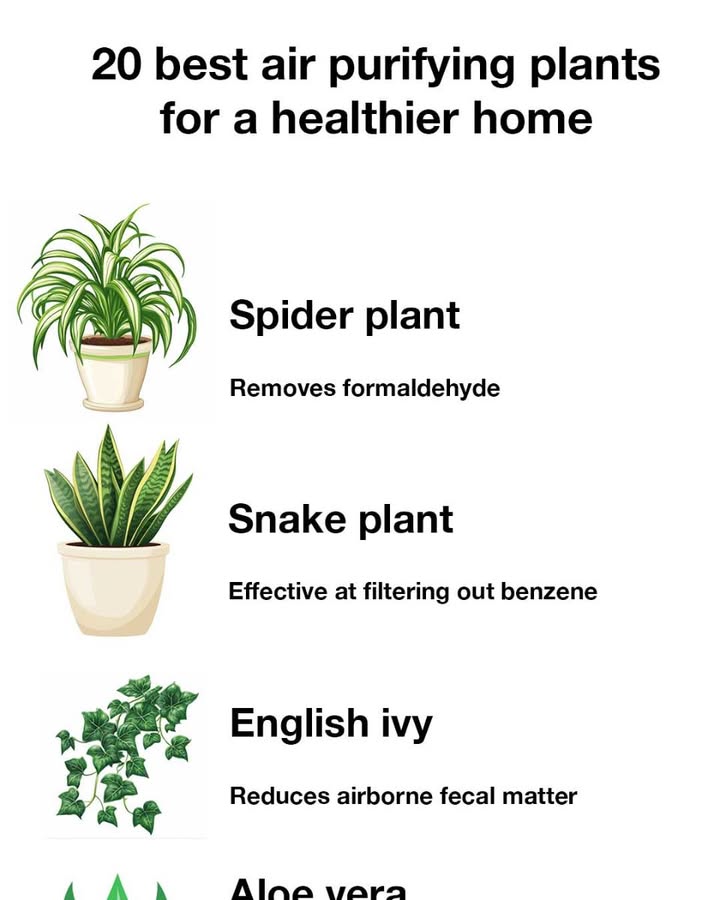ADVERTISEMENT
How Plants Improve Indoor Air Quality
Plants improve indoor air quality through a process known as phytoremediation, where they absorb pollutants through their leaves and roots. This process not only removes harmful chemicals from the air but also converts them into nutrients for the plant. Additionally, plants release oxygen through photosynthesis, which increases the oxygen levels in indoor spaces. Some plants are particularly effective at filtering out volatile organic compounds (VOCs), which are commonly found in household products and can contribute to indoor air pollution.
Factors to Consider When Choosing Air Purifying Plants
When selecting air purifying plants, it’s important to consider factors such as light availability, humidity levels, and maintenance requirements. Some plants thrive in low-light conditions, making them suitable for dimly lit rooms, while others require bright, indirect sunlight. Humidity levels in your home can also affect plant health, so it’s crucial to choose plants that can adapt to your environment. Additionally, consider the level of care each plant requires, as some may need frequent watering and attention, while others are more low-maintenance.
List of the 20 Best Air Purifying Plants
1. Spider Plant (Chlorophytum comosum) – Known for its resilience and ability to remove formaldehyde.
2. Snake Plant (Sansevieria trifasciata) – Effective at filtering out benzene and formaldehyde.
3. Peace Lily (Spathiphyllum) – Removes ammonia, benzene, and formaldehyde.
4. English Ivy (Hedera helix) – Reduces airborne fecal matter particles.
5. Bamboo Palm (Chamaedorea seifrizii) – Filters out benzene and trichloroethylene.
6. Aloe Vera – Known for its medicinal properties and ability to clear formaldehyde.
7. Boston Fern (Nephrolepis exaltata) – Excellent at removing formaldehyde.
8. Rubber Plant (Ficus elastica) – Removes toxins and is easy to care for.
9. Dracaena (Dracaena spp.) – Comes in various varieties, effective against several toxins.
10. Golden Pothos (Epipremnum aureum) – Known for its ability to purify air and its hardiness.
11. Areca Palm (Dypsis lutescens) – Adds moisture to the air and removes toxins.
12. Lady Palm (Rhapis excelsa) – Effective at removing indoor air pollutants.
13. Gerbera Daisy (Gerbera jamesonii) – Known for removing benzene and improving sleep quality.
14. Weeping Fig (Ficus benjamina) – Filters out pollutants like formaldehyde and xylene.
15. Chinese Evergreen (Aglaonema) – Tolerant of low light and removes toxins.
16. Broad Lady Palm (Rhapis excelsa) – Effective against ammonia.
17. Flamingo Lily (Anthurium andraeanum) – Known for its air-purifying capabilities and vibrant flowers.
18. Corn Plant (Dracaena fragrans) – Removes toxins like formaldehyde and xylene.
19. Dwarf Date Palm (Phoenix roebelenii) – Effective at removing formaldehyde.
20. Kimberly Queen Fern (Nephrolepis obliterata) – Known for its ability to remove toxins and its lush appearance.
Caring for Your Air Purifying Plants
Proper care is essential to ensure that air purifying plants thrive and continue to improve indoor air quality. Most plants require regular watering, but it’s important to avoid overwatering, which can lead to root rot. Ensure that plants receive adequate light based on their specific needs, and consider rotating them periodically to ensure even growth. Fertilizing plants during their growing season can also promote healthy growth. Pruning dead or yellowing leaves will help maintain the plant’s appearance and health.
Common Mistakes to Avoid with Indoor Plants
One common mistake is overwatering, which can suffocate plant roots and lead to fungal issues. It’s also important to avoid placing plants in direct sunlight if they prefer indirect light, as this can cause leaf burn. Neglecting to dust plant leaves can hinder their ability to photosynthesize effectively. Additionally, using the wrong type of soil can impact plant health, so it’s crucial to select a soil mix that suits the specific plant species.
The Impact of Air Purifying Plants on Health and Well-being
Air purifying plants can have a significant positive impact on health and well-being. By reducing indoor air pollutants, they can alleviate symptoms of allergies and asthma. The presence of plants has been linked to lower stress levels and improved mood, as well as increased focus and productivity. Studies have shown that being around plants can lower blood pressure and heart rate, contributing to overall health. Furthermore, plants can create a calming environment that promotes relaxation and mental well-being.
Conclusion: Creating a Healthier Home Environment
Incorporating air purifying plants into your home is a simple yet effective way to enhance indoor air quality and promote a healthier living environment. By selecting the right plants and providing proper care, you can enjoy the numerous benefits they offer, from cleaner air to improved mental health. As we spend a significant amount of time indoors, investing in air purifying plants is a worthwhile step towards creating a more comfortable and health-conscious home. Embrace the natural beauty and health benefits that these plants bring, and transform your living space into a sanctuary of well-being.


